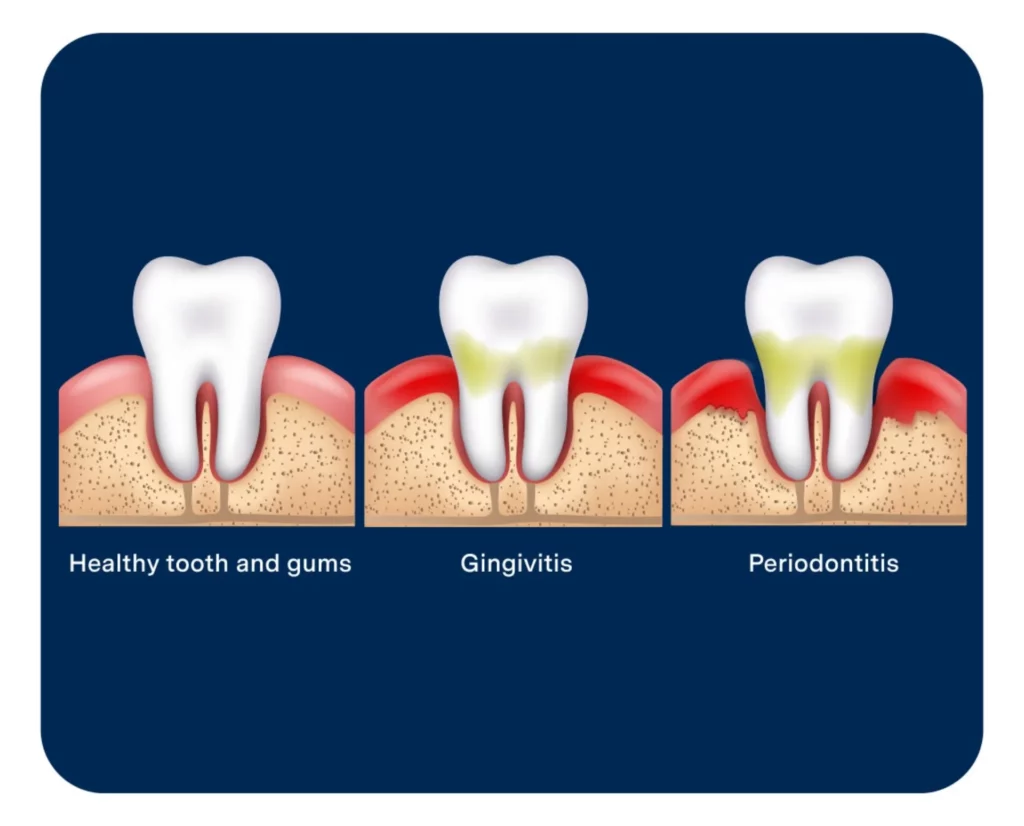
📍 Dr. Christopher Bingham | Periodontist in Austin, TX
Did you know that nearly half of adults over 30 have some form of periodontal disease?
What starts as mild redness or bleeding while brushing can escalate into serious dental issues, including gum recession, loose teeth, and even tooth loss. The key to a healthy smile is understanding the difference between gingivitis and periodontitis—and knowing when to take action.
Gingivitis is the earliest stage of periodontal disease and is reversible. It occurs due to plaque buildup along the gumline. When plaque isn’t removed through proper brushing and flossing, it leads to:
Gingivitis is often painless, which is why many people do not realize they have it until it has progressed. While mild gingivitis may not seem alarming, untreated inflammation can lead to more serious complications.
Good news! Gingivitis is treatable and reversible with proper oral hygiene, professional cleanings, and regular dental checkups. Early intervention is key to preventing the progression of periodontal disease.
To stop gingivitis in its tracks, follow these simple steps:
Gingivitis is highly preventable with daily oral hygiene habits. If you have symptoms, don't delay in addressing them—early action can prevent costly and uncomfortable dental treatments later.
If left untreated, gingivitis can advance to periodontitis, a more severe form of periodontal disease. This occurs when plaque spreads below the gumline, leading to:
As the disease progresses to periodontitis, infection and inflammation spread beneath the gumline—causing bone loss, gum recession, and deep pockets between the teeth and gums. At this stage, treatment aims to stop further damage and protect your oral health through targeted therapies and consistent professional care.
Periodontitis requires professional intervention, starting with deep cleaning (scaling and root planing) and, in more advanced cases, pocket reduction surgery (osseous surgery).
Pocket reduction surgery reduces deep gum pockets, making it easier to maintain oral hygiene and prevent further infection or tooth loss. In some cases, bone grafting and gum grafting may also be performed to restore lost tissue and support long-term oral health.
In addition to persistent bad breath, gum recession, and deep pockets, some other signs of periodontitis include:
The earlier periodontal disease is diagnosed, the more successful treatment can be in preserving your natural teeth.
Understanding these stages can help patients recognize symptoms early and seek appropriate treatment before extensive damage occurs.

Several factors can increase the risk of developing periodontal disease:
If you have any of these risk factors, taking preventive measures is especially important to avoid the development of periodontal disease.
To lower your risk of developing periodontal disease, follow these essential oral care tips:
Preventing periodontal disease not only protects your teeth but also benefits your overall health. Studies show links between gum disease and conditions such as heart disease, stroke, and diabetes.
At Council Oak Perio, Dr. Christopher Bingham, a board-certified periodontist in Austin, Texas specializes in advanced treatments for periodontal disease, including:
Our goal is to provide the most effective and comfortable treatment for periodontal disease, helping patients maintain optimal oral health and regain confidence in their smiles.
If you notice any of the following signs of periodontal disease, schedule an appointment immediately:
Early intervention is crucial to preventing periodontal disease from worsening and leading to permanent tooth loss. If you have any concerns about your gum health, it is best to consult a periodontist before the condition progresses.
Understanding the difference between gingivitis and periodontitis is essential for lifelong oral health. While gingivitis is reversible, periodontitis requires expert periodontal care. Prioritizing your gum health today can prevent serious dental problems in the future. Contact us today and check out the array of services we offer.
Visit Us: 711 W. 38th St, Ste G5, Austin, TX 78705
Call: (512) 453-1600
Sources: